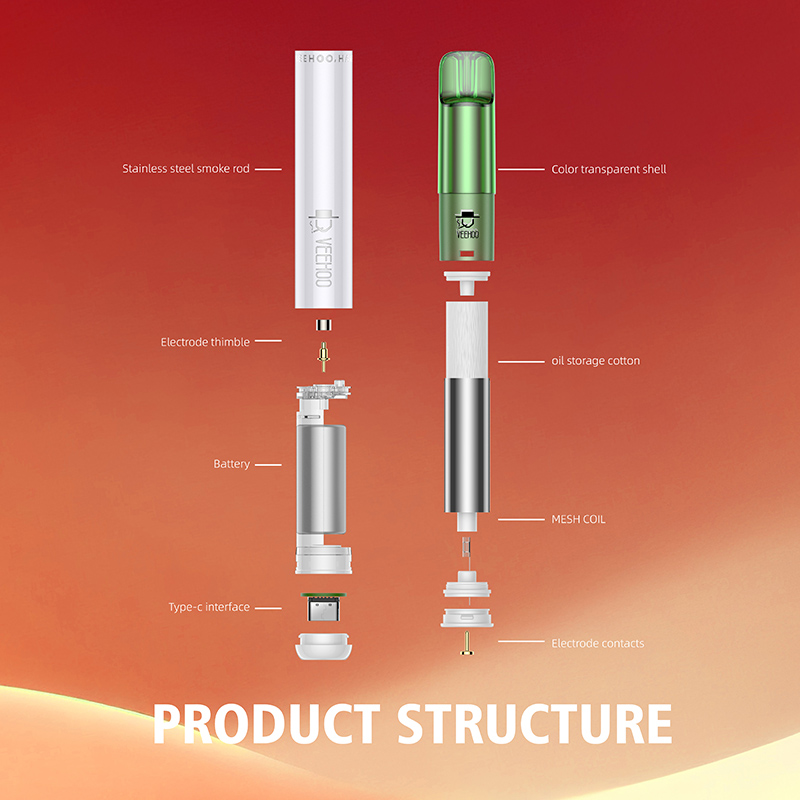The microphone is the mainstream startup sensor currently used in vapes. The ability of vapes to simulate the traditional smoking process is inseparable from the microphone.
When it comes to vape microphones, the most common combination is a capacitive electret microphone + chip, which is installed on the solution board and connected to the heating wire and battery through lines to provide intelligent start, charge and discharge management, status indication, and output power. Management and other functions.
Table of contents:
1. Capacitive electret microphone
3. Working principle of microphone
4. Assembly and functional iteration of vape microphones

1. Capacitive electret microphone
The principle of the capacitive microphone responding to external actions is that the air flow causes the deformation of the conductive film, thereby causing the equivalent capacitance to change. At the same time, in order to avoid external interference, when the change reaches a certain value, the detection module only outputs smoke to the internal Signal.
Working principle: It can be deduced from two formulas, C=εS/4πkd…
①And C=Q/V……②.
As can be seen from the above figure, suction/blowing causes the conductive film to deform, changing the distance between it and the electrode plate, resulting in a change of Δd. Therefore, it can be seen from formula ① that a change of ΔC is bound to occur. According to the formula ② It is also known that due to the change of ΔC, the charging charge is fixed, so a change of ΔV is bound to occur.
This generates an electrical signal, which is then transformed and amplified through impedance, ultimately triggering the vape to work.
2. Microphone chip
After the capacitive microphone senses the start signal, the signal needs to be processed and fed back for the next step. At this time, it is the turn of the microphone chip to play a role. Microphone chips are generally designed using ASICs. The manufacturing process includes chip design, tape-out, and packaging. , testing and other links, vape functions such as air flow sensor circuit, output power management, function control, charging management, status indication and protection circuit can be integrated.

3. Working principle of microphone
The response of electret microphones and silicon microphones is to form a parallel plate capacitor through the diaphragm and the back plate. The differential pressure of the air flow causes the diaphragm to deform, and then the capacitance changes. After being identified and processed by the ASIC chip, an electrical signal is output. Finally, the vape can be started and stopped.
The key point is the capacitance change.
In circuit science, the ability of a capacitor to store charge at a given voltage is called capacitance, labeled C. The parallel plate capacitor is a simple capacitor consisting of two thin plate conductors parallel to each other and separated by space or dielectric.
According to the relevant formula of parallel plate capacitor, it is:
●Normal vape microphone: the guide plate area A is fixed, the medium permittivity ε defaults to air, and the air flow deforms the diaphragm—the distance d between the diaphragm and the plate changes—causing capacitance changes;
● Oil leaking vape microphone: The guide plate area A is fixed, and there is not air between the plate and the diaphragm, but e-cigarette oil. Then, the dielectric permittivity ε changes – causing a change in capacitance – self-starting.

4. Assembly and functional iteration of vape microphones
The production process of vape microphones is mainly assembly, sealing, patching, testing, welding, and inspection. Among them, the welding part was manual welding in the early days, and the consistency was difficult to guarantee. With the introduction and maturity of automated equipment, leading manufacturers now basically use automated welding.
In terms of types, the current vape air flow sensor solutions include, in addition to microphones, MEMS differential pressure sensors, MEMS flow sensors, TPD barometers and other solutions.
In terms of functions, in order to meet the national standards and the requirements of some overseas countries and regions, child locks were once a hot spot in industry research and development. Problems such as self-starting, waterproofing and oil-proofing have also been solved one by one with the development and application of technologies such as nano-coating and new microphone structure design.
Tags: vape structure knowledge,vape microphone introduction,vape mouthpiece,What is the basic knowledge of vaping,veehoo vape